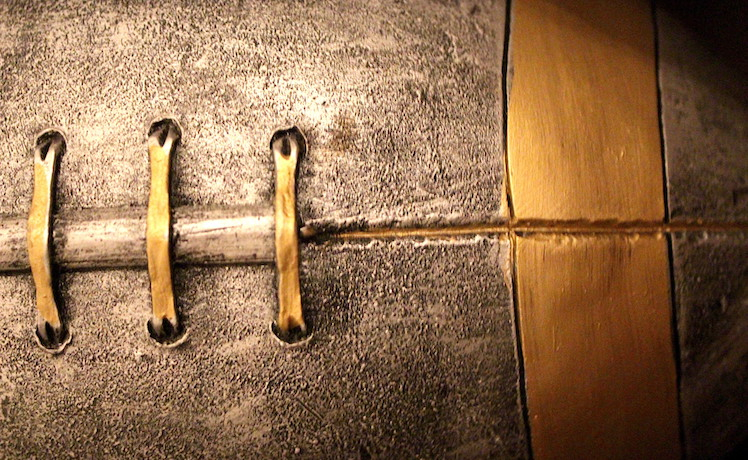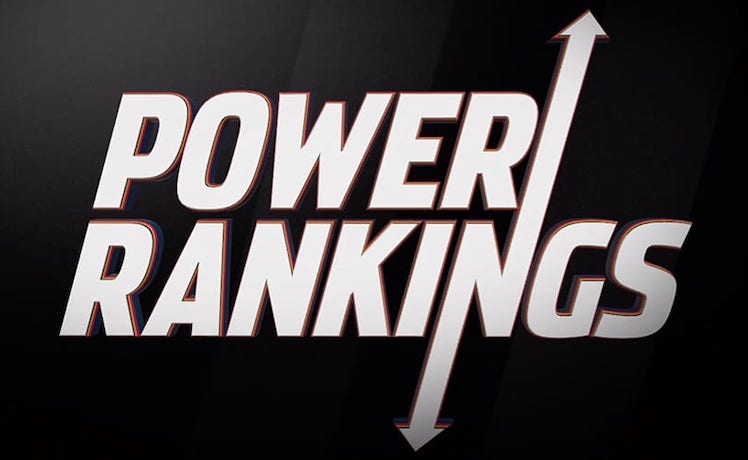Predictions
Now we are at the good stuff and with only the best teams left (or at least the teams that busted their asses to get into the playoffs) and we get to see how much I like your team and their chances of moving on to the next round and in most cases the finals. The season now means nothing and all that I care about is the game in front of me.
Division 1
Gros Coqs vs Henchmen
This one shouldn’t come as a surprise to anyone, Gros Coqs easily. I have to go with Gros Coqs as they will be there and with Henchmen you know that right now they are asking the Commissioner (ed’s note: I like this random capitalization of the position title) for subs and I don’t even know who will be throwing for them. I think that if Henchmen pulled off the win it would be one of the biggest upsets ever in MFL history.
Outlaws vs Holy Trollers NA
By now you all know I don’t pick my team games, but I will say that this will be the best game played in the first round in the entire league. It will be close as both teams know each other so well. Both teams knew coming into the season that if they wanted to win it all they would have to play each other at some point, but most thought it would be in the finals.
Division 2
Centurions vs Old School
I feel Centurions are too strong for Old School. When I look at the match ups, I can’t see how Old School will score enough points to win the game. Centurions will frustrate Dahic all day with the defense that they play. Old School can pull it off if they play a perfect game, but I just can’t see that happening.
Nice TDs vs OG Panthers
With Kris being a little banged up and with the roster that OG Panthers have I can see the upset happening. Nice TDs were a top team until a few weeks ago and OG Panther just creeped into the playoffs. If OG Panthers are to have a chance they will need their defense to get turnovers and give the offense extra chances at scoring. Normally I would have said that Charles needs to play his ass off for them to win, but not in this one.
Division 3
Ninja Turtles vs Sriracha All Stars
I’ll keep it real with you, like I have all season. Sriracha All Stars have no chance in this one. Ok, they might if Ninja Turtles play with only 5 players and even then it would be difficult. Everyone on Sriracha All Stars needs to play the best game of their life to even keep it close and they need to get some luck along the way.
Mustard Tigers vs Iron Wolves
This is the game in this division that people should watch. Both teams are solid and when they are on their games are very meticulous with their attack and take what is given to them. The big question mark in this game will be the roster for Iron Wolves, all season they have been missing players and if I knew they had their full roster then I might have even picked them to win, but with the unknown I have to go with the team that will have their entire roster there.
Division 4
Citadins vs Les Beautes
Citadins are by far the best team in the division. I can’t see how Les Beautes are going to even keep this game close. It wouldn’t surprise me to see Citadins defense score more points than Les Beautes offense. If Les Beautes can keep it to a 3-score game I would consider that a win for them. (ed’s note: Jeez, Kev.)
Sofa King Good vs Thunder Buddies
I am picking Sofa King Good to win as I feel they have too much fire power on offense and will score more points. Thunder Buddies need Terry to play a great game at QB for them to have a chance. They will also need to catch the ball when it is thrown to them. I also feel that Thunder Buddies need their defense to get them a few extra possessions to pull off the win. I just can’t see all that happening.
Power Rankings
This is where you would normally see my power ranking but with the season done and none of that really mattering anymore, I will skip this section and add a new section just for this week.
All-Star Selection
Let me tell you how I have made my selections. First off you can only make it at one position per division. If you play on multiple teams you are only able to make it at your highest division unless you are playing a different position in another division. I will be choosing an entire offense and a defense. Let’s get to my selections and see who is on my MFL Dream teams.
Division 1
Offense
QB- Stephen Harripersaud (Outlaws)
Center- Vincent Granata (Gros Coqs)
WR 1- Marvin Steinberg (Red Raiders)
WR 2- Kevin Smuda (Outlaws)
WR 3- Jean-Christophe Ferland (Trollers)
WR 4- Alexandre Bresse (Gros Coqs)
Defense
Rusher- Terry Babalis (Outlaws)
Corner 1- Andrew Grant (Henchmen)
Corner 2- Etienne Moisan (Gros Coqs)
LB – Vincent Blondin (Outlaws)
Safety 1- Benjamin Bergeron (Trollers)
Safety 2- Jonathan Svetna (Outlaws)
Division 2
Offense
QB- Gabriel Archambault (Centurions)
Center- Maximilien Sadori (Joey’s Haters)
WR 1- Kevin Bourbonnais (Bitter Boys)
WR 2- Vincent Naulet (Bitter Boys)
WR 3- Nick Reeves (Old School)
WR 4- Raphaël Constantin (Centurions)
Defense
Rusher- Daniel Murray Jr. (Deep Threats)
Corner 1- Jocelyn Ouellet (Bitter Boys)
Corner 2- Kamba Katchelewa (OG Panthers)
LB – Nicolas Poitevin (Nice TDs)
Safety 1- Samuel Collette (Centurions)
Safety 2- Simon-Pierre Laferrière (Centurions)
Division 3
Offense
QB- Wade Junior Shallcross (Ninja Turtles)
Center- Thomas Znoj (Mustard Tigers)
WR 1- Serge Pilon (Ninja Turtles)
WR 2- Alex Pilon (Ninja Turtles)
WR 3- Tam Vilaydeth (Ninja Turtles)
WR 4- Craig Owie O’Brien (Mustard Tigers)
Defense
Rusher- Gabriel Desharnais (Raccoons)
Corner 1- Mathieu Filipe (Ninja Turtles)
Corner 2- Alec Myles (Iron Wolves)
LB – Marilou Cote-Noel (Mustard Tigers)
Safety 1- Jie Ouyang (Mustard Tigers)
Safety 2- Tameem Riman (Sriracha All Stars)
Division 4
Offense
QB- Sam Laird (Sofa King Good)
Center- Kyle Lavoie (Sofa King Good)
WR 1- Tyler Cousins (Sofa King Good)
WR 2- Chris Arella (Flamboyant Flamingos)
WR 3- Thomas Iribarren (Les Beautes)
WR 4- Kevin Da Silavia (Sofa King Good)
Defense
Rusher- Simon Biedermann (Citadins)
Corner 1- Tyler Cousins (Sofa King Good)
Corner 2- Christopher Blair (Citadins)
LB – Geoffroy Tournier (Les Beautes)
Safety 1- Gabriel Somma (Flamboyant Flamingos)
Safety 2- Alexandre Saint-Onge (Thunder Buddies)
There you go, my all-star picks for the Fall season. I know I couldn’t make everyone happy by putting you all up here, but if I had done that, what kind of all-star team is that? There was one player that I almost broke the rules for, but I didn’t because I knew that if I did someone would complain about it. I won’t say who it was but I will give a hint as to who it was. She played for both Ninja Turtles and Citadins and she balled out on her lower team and it was super hard not to include her as one of my picks. If I had it would had caused people to message me all week and tell me how they should have been included as well.
Final Thoughts
The season is done and now we move on to the playoffs. I know that some teams didn’t make it and are still interested in playing, but the fall season is only a week away and if you haven’t already registered, I’m sure that space is still available.
With the playoffs happening this week everyone one is invited out to watch the games. We will be having a little BBQ and cash bar, so remember to bring cash with you!
During a normal season, we would be having a get together at a bar or pub or something, but this year with Covid we will be handing out all the awards this week at the field. We encourage you all to come out cheer for your favorite team and maybe heckle a team or player you hate and have a good time.
It’s the last week and time for having fun is over. It’s now time to bust your ass and try and help your team win a title, but you still need to be safe since we all have snuggles to do the rest of the week. Thanks for reading and I hope to see everyone out there this week and, if not, at least in the fall.





